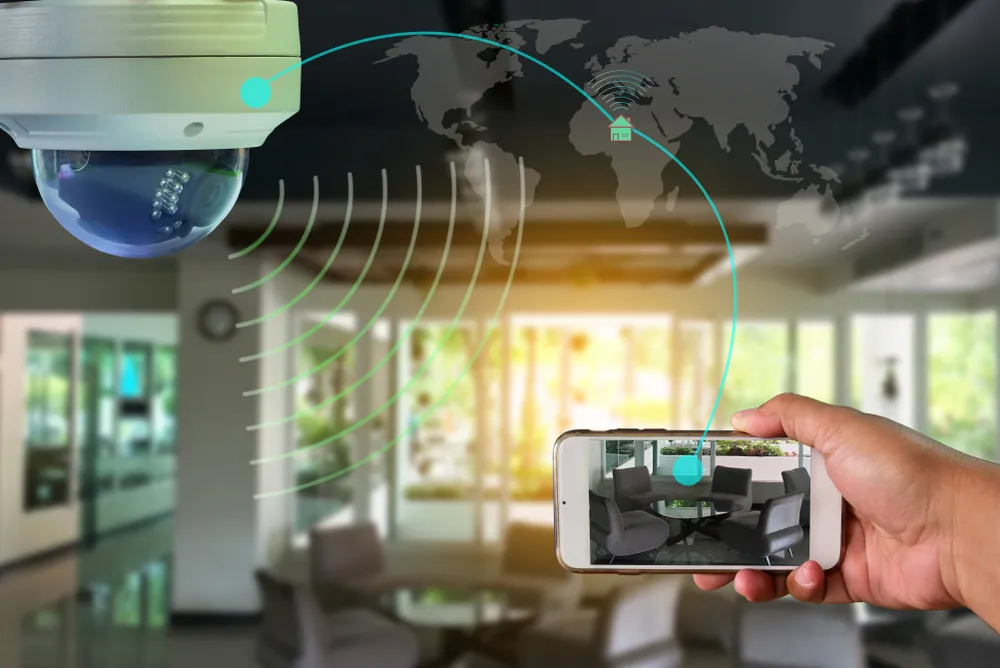A home security system does more than just sound an alarm. It provides a complete safety net for your home. When an intrusion is detected, multiple systems work together to respond quickly. Understanding how this process works can help homeowners feel more secure and make informed decisions about their security setup.
This article’ll explain what happens when a home security system detects an intrusion. We’ll explain each step, from sensor activation to emergency response, and discuss the role of smart home security in keeping your home safe.
Step 1: Detection of an Intrusion
How Sensors Work
Security systems use different types of sensors to detect movement, entry, or tampering. These sensors include:
- Door and Window Sensors: These trigger when an entry point is opened unexpectedly.
- Motion Sensors: These detect movement in a specific area using infrared or microwave technology.
- Glass Break Sensors: These activate when they detect the sound of breaking glass.
- Shock Sensors: These respond to forced entry attempts, like kicking a door.
Each sensor plays a crucial role in detecting threats. Once triggered, they send a signal to the control panel, determining the next step.
Step 2: Immediate Alarm Activation
The Role of the Control Panel
The control panel is the system’s brain. It verifies the threat when it receives a signal from a triggered sensor. The alarm is activated if the security system is armed and an unauthorized entry is detected.
Types of Alerts
When an alarm is triggered, it alerts the homeowner and security monitoring center in different ways:
- Audible Alarms: Loud sirens or beeping noises scare off intruders.
- Silent Alarms: These notify security services without alerting the intruder.
- Flashing Lights: Some systems use strobe lights to draw attention.
The alarm aims to deter the intruder and alert the homeowner or monitoring center.
Step 3: Notification to the Homeowner
How Homeowners Receive Alerts
Modern security technology uses various methods to notify homeowners when an intrusion is detected. These include:
- Push Notifications: Sent via mobile apps in real-time.
- Text Messages or Emails: Provide instant updates.
- Phone Calls: Some systems use automated or live calls to notify homeowners.
Smart home security allows homeowners to check their security cameras remotely. This lets them confirm whether an actual threat or a false alarm triggered an alarm.
Step 4: Security Monitoring Center Response
What Happens Next?
If your home security system is professionally monitored, the monitoring center receives an alert when an intrusion is detected. A trained security expert assesses the situation and follows the next steps:
- Verification: The monitoring team checks the live security feed or contacts the homeowner to confirm the alarm.
- Emergency Dispatch: If the homeowner confirms an intrusion or fails to respond, the center contacts the police.
- Additional Alerts: Some systems notify neighbors or emergency contacts as an added layer of security.
This quick response helps ensure law enforcement is dispatched as soon as possible.
Step 5: Law Enforcement and Emergency Response
How Police and Emergency Services Respond
Once the police are alerted, they respond based on the severity of the intrusion. Their response time varies depending on location and emergency call volume. However, homes with monitored security systems often receive higher priority because an official security team has verified the threat.
Emergency responders may also be dispatched if needed. Firefighters or medical teams may also be sent if the security system detects smoke or carbon monoxide along with an intrusion.
Step 6: Recording and Evidence Collection
How Smart Security Systems Help Investigations
Many modern security systems include cameras that record footage when an alarm is triggered. This helps homeowners and authorities gather important evidence. Security cameras provide:
- Time-stamped footage: Captures exact times of entry and movement.
- Facial recognition: Some security systems identify known or unknown individuals.
- License plate tracking: Outdoor security cameras can capture getaway vehicles.
Recorded footage helps police track suspects and increases the chances of recovering stolen property.
Step 7: Homeowner Follow-Up
What to Do After a Security Event
After an intrusion, homeowners should take specific steps to restore security and prevent future incidents:
- Check for Damage: Inspect doors, windows, and entry points for signs of forced entry.
- Review Security Footage: Look for details that may help police.
- Update Security Measures: Strengthen weak points in the home’s security setup.
- Notify Insurance: If theft or damage occurred, report it to your insurance company.
Taking immediate action ensures safety and prevents repeat incidents.
The Role of Smart Home Security
How Smart Technology Enhances Safety
Smart home security systems use automation to improve safety. Features like:
- Automatic Lights: Motion-activated lighting helps scare off intruders.
- Remote Monitoring: View live security footage from a smartphone.
- Smart Locks: Lock and unlock doors remotely.
- Geofencing: Arms or disarms the security system based on your location.
These features make home security more efficient and responsive.
Common False Alarm Triggers
Avoiding Unnecessary Alerts
Not all alarms indicate real threats. Some common causes of false alarms include:
- Pets triggering motion sensors
- Incorrectly entered security codes
- Faulty or low-battery sensors
- Objects moving near motion detectors
To reduce false alarms, homeowners should regularly test their home security system and update security settings as needed.
Conclusion
A home security system does more than sound an alarm—it provides real-time protection. When an intrusion is detected, each step happens quickly to ensure safety. From sensor activation to law enforcement response, every part of the security system keeps your home secure.
By understanding how home security systems work, homeowners can choose the right setup and stay prepared for emergencies. Investing in smart home security ensures a safer living environment and peace of mind.

